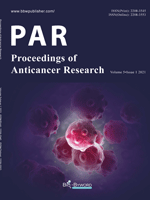Abstract
Acupuncture is a traditional Chinese medicine therapy originated in China. In recent years, acupuncture is widely used in the field of neurological diseases, especially in the acute stage of stroke. Its mechanism of action is becoming clearer; one of the possible mechanisms is its bidirectional benign regulation.
References
Han J, Yang J, Chang L, et al., 2020, Effect of Acupuncture “Shuigou” “Neiguan” on Expression of Apoptosis Related Factors in Cerebral Tissue around Hematoma in Rats with Cerebral Hemorrhage. Acupuncture Research, 45(10): 812-817.
Sun X, Yang Z, Meng Z, 2109, Protective Mechanism of Blood-brain Barrier in Rats with Cerebral Hemorrhage by Different Duration of Acupuncture. China Journal of Traditional Chinese Medicine and Pharmacy, 34(11): 5123-5126.
Li G, Li X, Dong J, et al., 2021, Effects of Electroacupuncture on Neurovascular Units and Wnt/ ?-catenin Signaling Pathway in Rats with Cerebral Ischemia. Acupuncture Research, 46(02): 87-94.
Chang S, Zhang X, Zhang A, et al., 2021, Study on Acupuncture Promoting Angiogenesis and Prolonging Thrombolysis Time Window of Cerebral Infarction. Acupuncture Research, : 1-10.
Sporns O, Zwi JD, 2004, The Small World of the Cerebral Cortex. Neuroinformatics (Neuroinformatics), 2(2): 145-162.
Sporns O, Chialvo DR, Kaiser M, et al., 2004, Organization, Development and Function of Complex Brain Networks. Trends in Cognitive Sciences (Trends Cogn Sci), 8(9): 418-425.
Achard S, Salvador R, Whitchere B, et al., 2006, A Resilient, Low-Frequency, Small-World Human Brain Functional Network with Highly Connected Association Cortical Hubs. J Neurosci, 26(1): 63-72.
Sporns O, Honey CJ, 2006, Small Worlds Inside Big Brains. PNAS, 103(51): 19219-19220.
Raichle ME, MacLeod AN, Snyder AZ, et al., 2001, A Default Mode of Brain Function. Proceedings of the National Academy of Sciences of the United States of America, 98(2): 676-682.
Drummond SPA, Walker M, Almklov E, et al., 2013, Neural Correlates of Working Memory Performance in Primary Insomnia. Sleep, 36(9): 1307-1316.
Han X, 2019, Study on Brain Effect Mechanism of Acupuncture Intervention in Stroke Based on Whole Brain Functional Network. Beijing University of Chinese Medicine, 119.
Fu C, 2016, Multiple Granger Causality Analysis of Yanglingquan Acupuncture on Resting Brain Network Response Characteristics of Stroke Hemiplegia. Beijing University of Chinese Medicine, 141.
Jiang S, 2017, Study on the Mechanism of Scalp Acupuncture in Stroke Hemiplegia Based on Resting State fMRI and DTI. Beijing University of Chinese Medicine, 122.
Wang D, Zhang B, Deng R, et al., 2021, Effects Analysis on “Lateralization of Brain” Theory and the “Two-way Regulation” of Acupuncture and Moxibustion. Journal of Clinical Acupuncture and Moxibustion, 37(02): 1-5.
Zheng Z, Zou K, Yang C, et al., 2015, On the Rise and Fall Theory of Qi from the Perspective of Brain Asymmetry Variation of Mental Diseases. Journal of Chengdu University of Traditional Chinese Medicine, 38(4): 6.
